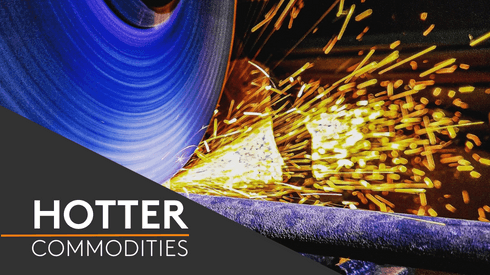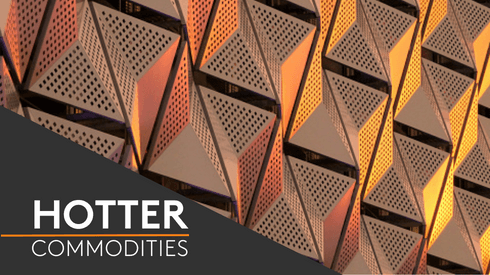Although benchmark discussions are still in the early stages, sources said they expect benchmark TCs to be agreed in the $20s or low $30s per tonne, well below last year’s level of $80 per tonne.
Fastmarkets’ analytics team is currently forecasting a benchmark between $28 and $33 per tonne, or $30.30 per tonne +/- 10%.
“The spot concentrate market is likely to remain super tight next year,” Fastmarkets analyst Andy Cole said.
This year has seen an unprecedentedly tight copper concentrates market and record low TCs. Fastmarkets’ weekly calculation of the copper concentrate TC index hit a record low of $(5.00) on June 21 this year.
A low copper concentrate TC implies a relatively weak supply of concentrates and relatively strong demand.
The tightness was caused by a number of factors: First Quantum’s Cobre Panama mine shut in November last year, and production at a number of other miners has been subdued this year.
At the same time, smelter capacity has significantly expanded, especially in China. This has meant that more smelters are fighting over the concentrates, again pressuring TCs lower.
Next year, even more smelter capacity will come online, with major projects slated in Indonesia, China and India, but there is little expectation of concentrate supply improving significantly.
Benchmark expectations for 2025
Market sources expect the copper concentrate TC benchmark to be far lower than last year’s $80 per tonne due to the tight market conditions.
Spot TCs so far this year have been well below the agreed benchmark.
During LME Week earlier this month, market sources estimated that the benchmark would be between the $20s per tonne and $30s per tonne.
“Big miners are budgeting for a benchmark of around $30 per tonne for 2025,” one miner source told Fastmarkets.
Some sources saw even lower numbers as possible, pointing to Antofagasta’s agreed mid-year deal at $23.25 per tonne and highlighting that little has changed since then to influence an uptick in TCs.
“The market hasn’t changed since the mid-year number, so why should the long-term TCs?” a second miner source asked. “Whatever happens, we will see a big deficit.”
A third miner source told Fastmarkets that smelters are resigned to a low benchmark.
“Their hands are by their sides; they are resigned to unfavorable TCs,” the third mining source said.
A number of sources told Fastmarkets that it was unlikely a benchmark would be agreed significantly above $30 per tonne, with smelters willing to be more aggressive in their discussions to secure tonnage.
“The problem is that smelters are willing to be in a dog fight and then none of them will make any money,” one trader source told Fastmarkets.
“It’s a fight to the bottom,” a fourth miner source said, adding that “smelters are buying whatever they can.”
The fight between smelters to guarantee units is likely to make agreeing a favorable benchmark for the smelters a challenge.
“Smelters think they will be lucky to get high $20s per tonne and have come to terms with that,” the first miner source said.
“One smelter told us that if the benchmark is agreed above $30 per tonne, they would happily undercut that level to secure tonnage,” the miner added.
“If you are a smelter you agree at $25 and see who lasts longest,” a second trader source said.
Most sources agreed that securing tonnage was more important for smelters than securing favorable TCs.
Due to the fixed costs of smelters, such as debts, employee costs and other costs they cannot avoid, sources noted that they would lose more money with no material to process than by paying TCs in the $20s per tonne.
Trader impact
It is not just smelters that will be vying for concentrate that will pressure the benchmark, but also traders.
Multiple sources noted that if the benchmark was agreed above $30 per tonne, the spot market would likely be lower, meaning traders would have an incentive to buy on long-term contracts to sell on spot.
The pressure of traders undercutting smelters forces smelters to agree TCs at low levels, sources said.
They also noted that fundamentally it may not matter because it was likely that a higher benchmark would mean a lower spot market and vice versa.
“The aggregate of benchmark and spot will be around $25 per tonne,” the second trader source said, stating that if the benchmark was agreed higher than $25 per tonne, spot would be likely be lower.
“Traders have the ability to undercut the benchmark; if it [benchmark] is agreed too high, they will just go under it,” the second miner source told Fastmarkets.
“Miners are selling to traders as much as they can for 2025,” a fifth trader source said.
The benchmark for 2025 is not yet decided, but one thing is for sure: a number of smelters will be challenged by the low TCs expected next year which may lead to curtailments or low utilization rates at a number of smelters.
“With the big drop in the benchmark for 2025, we would expect to see more smelter production cutbacks via commissioning delays or slower ramp-up schedules for new smelters, and lower utilization rates or extended maintenance breaks for some operating smelters,” Fastmarkets’ Cole noted.
Inform your base metals strategy with metals price forecasts and analysis for the global base metals industry. Get a free sample of our base metals price forecast today.





